Heading into 2025, the Dallas Cowboys’ secondary was supposed to be the team’s weakness, and it has proven to be just that two games into the season.
Trevon Diggs and DaRon Bland were finally going to play together. The addition of Kaiir Elam was supposed to bring press-man toughness; this group has the potential to be one of the better units.
But through two games, Dallas ranks 31st in EPA per dropback allowed (0.35), ahead of only the Miami Dolphins (0.48).
Coverage busts, explosive plays, and a scheme that doesn’t play to its corners’ strengths have left one of the NFL’s most talented secondaries underperforming.
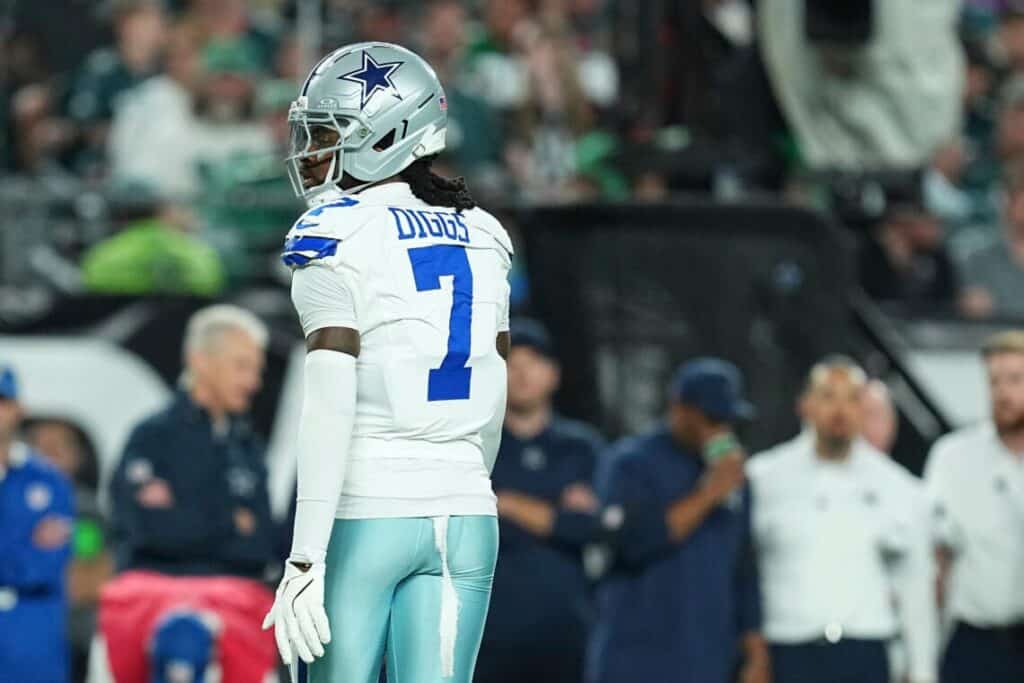
Trevon Diggs: Getting in the Zone, Hung Out to Dry in Week 2
Week 1 showed the version of Trevon Diggs Cowboys fans want to see—76.1 coverage grade, one reception for 9 yards, and sticky coverage against the Eagles’ passing game.
Week 2 was a different story:
- Targets: 5
- Receptions Allowed: 4
- Yards Allowed: 104 (including a 32-yard explosive play)
- Passer Rating: 158.3
Diggs thrives when playing man defense, using his eyes to break on the ball and his physicality to keep the receiver honest. He will figure out the heavy dose of zone defense, but it will take time.
In Week 2, miscommunication in Dallas’ zone coverage shells repeatedly left him in isolated situations, where route combinations exploited soft spots in the zone.
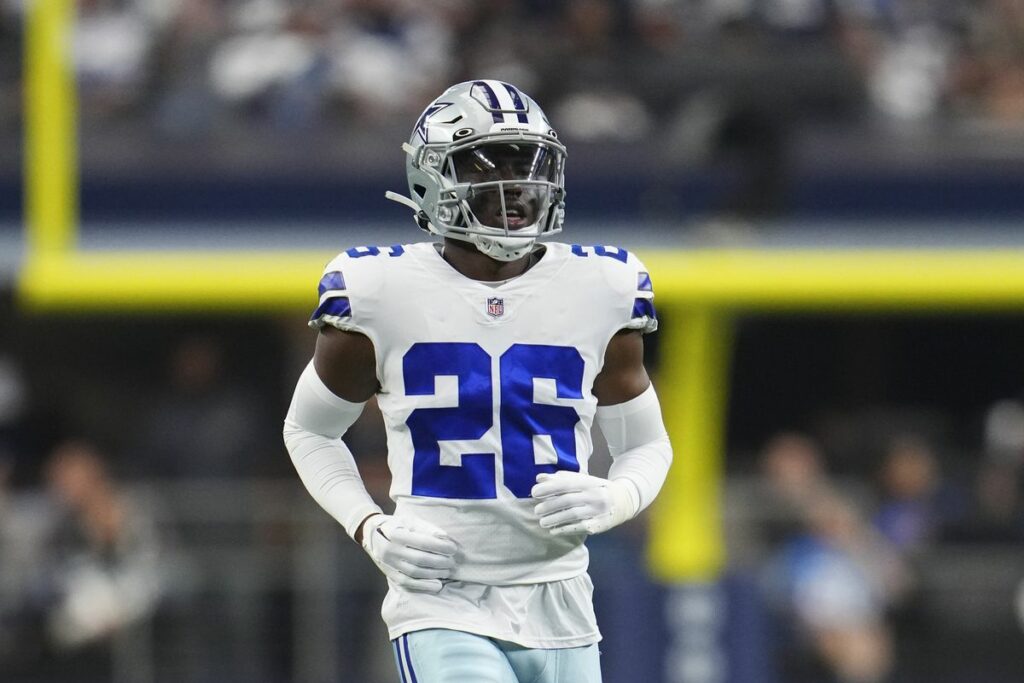
DaRon Bland: Dominant Week 1, Then Injured
Bland was excellent in Week 1:
- Coverage Grade: 70.4
- Targets: 2
- Receptions Allowed: 2
- Yards: 11
- Stops: 1 (on third down)
Unfortunately, Bland missed Week 2 with an injury, a major blow to the secondary. His absence forced Dallas to shuffle the nickel position and accelerated Reddy Steward’s playing time.

Reddy Steward: A Bright Spot Filling in at Nickel
Steward stepped in for Bland in Week 2 and played well, grading 74.1 in coverage—the highest in the secondary. He allowed just 23 yards on five targets, recorded a pass breakup, and had two stops in the short passing game.
While Dallas still surrendered too many chunk plays, Steward’s performance suggests he can hold his own in a zone-heavy role until Bland returns.
Malik Hooker & Donovan Wilson: Mixed Safety Play
Malik Hooker gave up 102 yards on 2 receptions (both deep shots) in Week 2. His range makes him an asset, but he can only cover so much ground when coverage busts happen in front of him.
Donovan Wilson was the lone turnover creator, snagging an interception the one time he was covering the area he was assigned. He is best when allowed to play downhill in the box rather than covering receivers in space.
Kaiir Elam: Struggling to Adjust
Kaiir Elam’s numbers through two weeks are not good. He is the weak link and one of the reasons Malik Hooker is struggling, because Hooker is being left on the hook when Elam gets burned.
Elam’s numbers through two weeks:
- Targets: 14
- Receptions Allowed: 12
- Yards Allowed: 132
- Coverage Grade: 63.6 (Week 1) → 58.2 (Week 2)
He is best in press-man coverage, where he can disrupt receivers early. The heavy use of zone has led to late reactions and high YAC (16 yards after catch allowed vs NYG).
The Bigger Picture: Why This Scheme Isn’t Working
Across two games, the completion percentage allowed was 95% in Week 1 and 76.9% in Week 2, better but still high.
The yards per reception allowed jumped from 8.0 in Week 1 to 15.0 in Week 2. This, along with six missed tackles across the two games, is too many for a zone defense.
Dallas is not being beaten by volume, but by explosive plays and coverage confusion. Losing Bland hurt, but the scheme is still the root problem.
If the secondary can figure out their assignments and execute this scheme, it could work, but it may take a couple more games of high-scoring affairs until the scheme is understood.
The offense better be ready to put up some points.



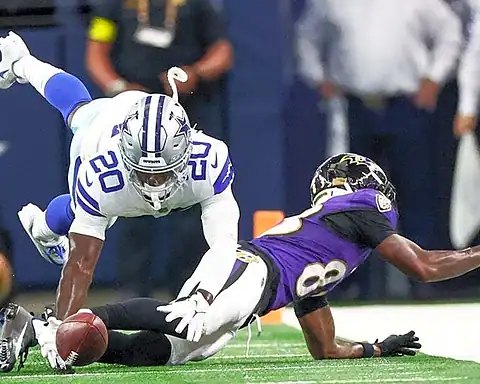


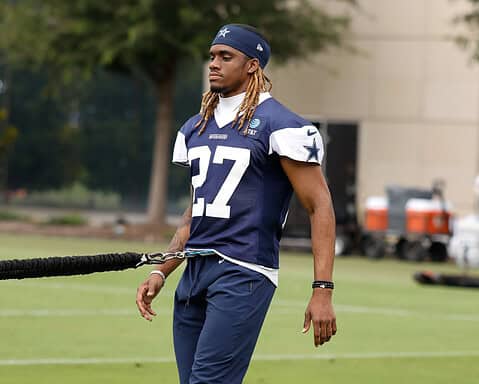
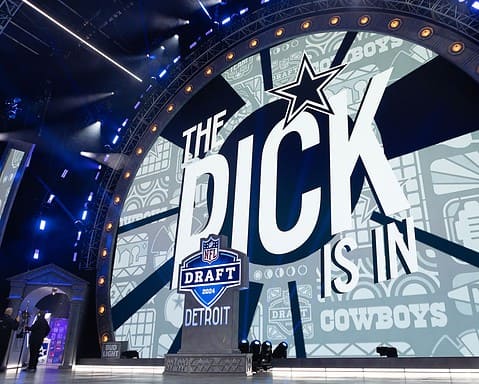



a Dallas Cowboys fan, since the 70’s the only way to fix the Cowboys secondary is let the back ups start